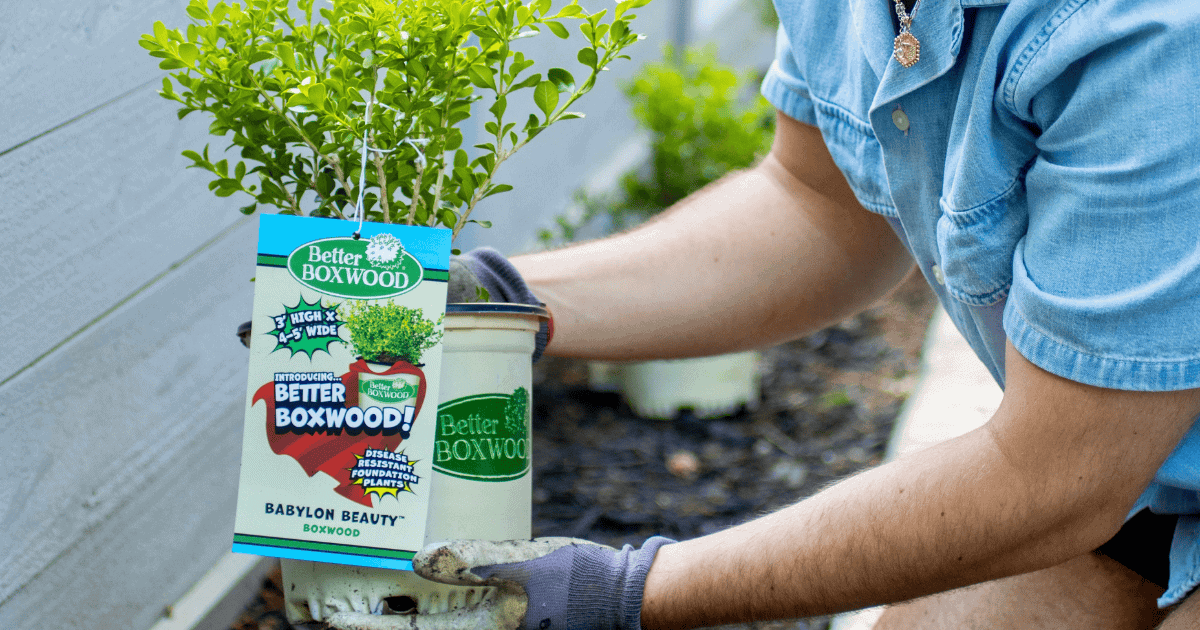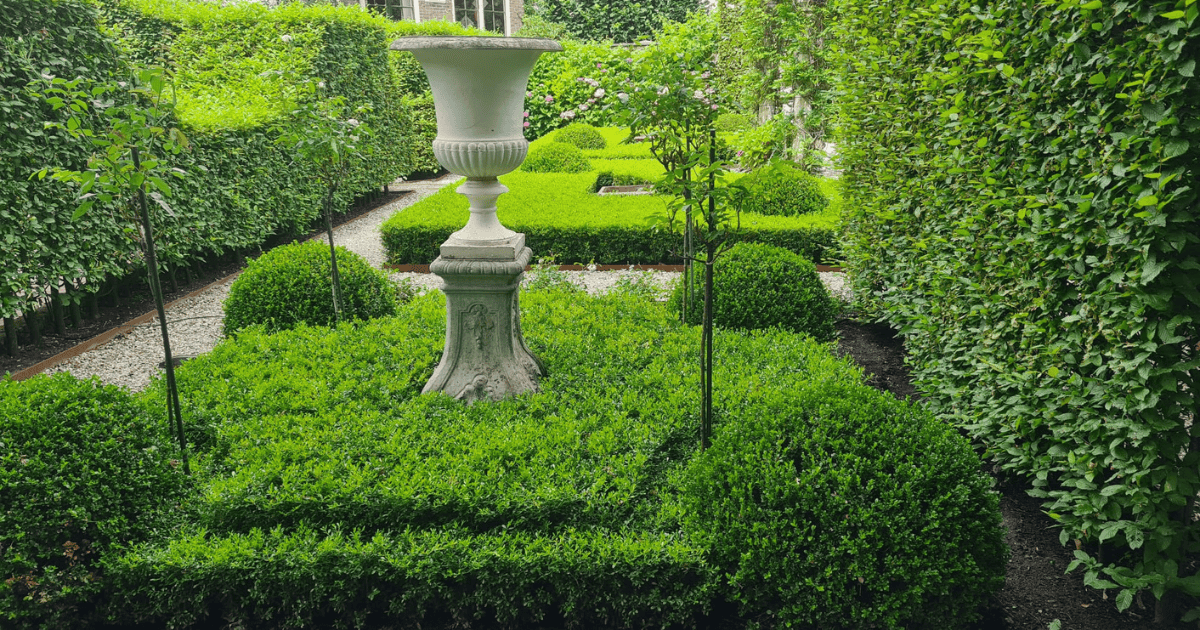
By Kim Toscano
Boxwoods are gorgeous evergreen shrubs that bring lasting color and structure to the garden. The Better Boxwood collection offers several types of boxwood shrubs for all your landscape needs – from foundation and hedge plants to compact boxwoods perfect for topiary plants. Give your plants the best possible start by learning how to plant boxwood in the ground including where to plant boxwood, how far apart to space plants, and when to plant boxwood in the garden.

Where to Plant Boxwoods
Boxwoods are versatile plants and easy to grow under a range of conditions. Boxwood shrubs are adaptable to a variety of soil conditions, from acidic to alkaline soil, clay to sandy loams, however they must have good drainage to keep roots healthy. For the greatest success, select a location that is protected from winter wind as boxwoods, like other broadleaf evergreens, are susceptible to winter damage.
Boxwood shrubs perform best in partial shade to dappled sun but also tolerate full sun exposure. In hot climates, boxwood plants benefit from afternoon shade and thrive with 4 to 6 hours of direct morning light. When planted under heavy shade, boxwood plants will have a more open habit, with less dense branching and foliage.
When to Plant Boxwood
To minimize stress on plants, it is best to plant boxwood in the garden when temperatures are moderate and rainfall plentiful. Spring is the best time to plant boxwood shrubs. Early spring weather remains cool, giving plants time to establish before the heat of summer sets in. And spring rains mean we spend less time irrigating.
Fall is also a good time to plant boxwoods, as the cooler temperatures reduce plant stress and are often accompanied by increased rainfall. Another benefit of fall planting is the long period of active root growth before the stress of summer returns. When planting in the fall, it is critical to irrigate regularly throughout the winter months to keep roots and soil moist and prevent leaves from drying out in the winter wind. Wait until spring to fertilize fall-planted boxwood.

How to Plant a Boxwood Shrub
Soil is the secret to any successful planting. Take time to prepare soil when planting boxwood to ensure proper drainage. If planting in a newly established bed, till soil deeply and incorporate compost to increase organic matter. Compost can also be used in established planting beds to improve drainage of clay soils and increase the water-holding capacity of sandy soils. If your soil drains poorly, consider planting boxwood on a berm or in a raised bed.
Dig your planting hole only as deep as the root ball of boxwood plant. This will ensure the plant is not set too deep. You want the crown of the boxwood, where the branches meet the roots, to sit just at the soil surface. Give the boxwood roots plenty of room to spread out by digging the planting hole three times wider than the container in which it is growing. This will loosen the soil around the boxwood and hasten root establishment.
Set plants in the planting hole, ensuring the crown rests just at the finished soil surface level. Refill with the original soil and tamp it gently to settle in around the roots. Water the plant very well after planting and apply a three-inch layer of mulch over the entire width of the planting hole. Mulch helps retain soil moisture and insulate roots against temperature extremes. Boxwoods have a shallow root system. Water plants regularly during establishment.

How Far Apart to Plant Boxwoods
Proper spacing ensures plants have enough room to develop a healthy root system and limits competition from neighboring plants for access to water, nutrients, and sunlight. When it comes to spacing boxwood in the garden there are several factors to consider. The expected mature size of different varieties plays a role, as does the goal of the planting. Boxwoods used as accents or foundation shrubs are spaced farther apart than those planted as hedges, parterres, or borders.
As a rule of thumb, space plants according to their expected size at maturity. For example, Babylon Beauty™ boxwood bushes planted in a foundation planting can be spaced 4 to 5 feet apart. If you wish to plant a boxwood as an accent or focal point, set them slightly farther apart than their mature width. This allows the full form of the plant to be visible. The same is true for boxwood used for topiary.



